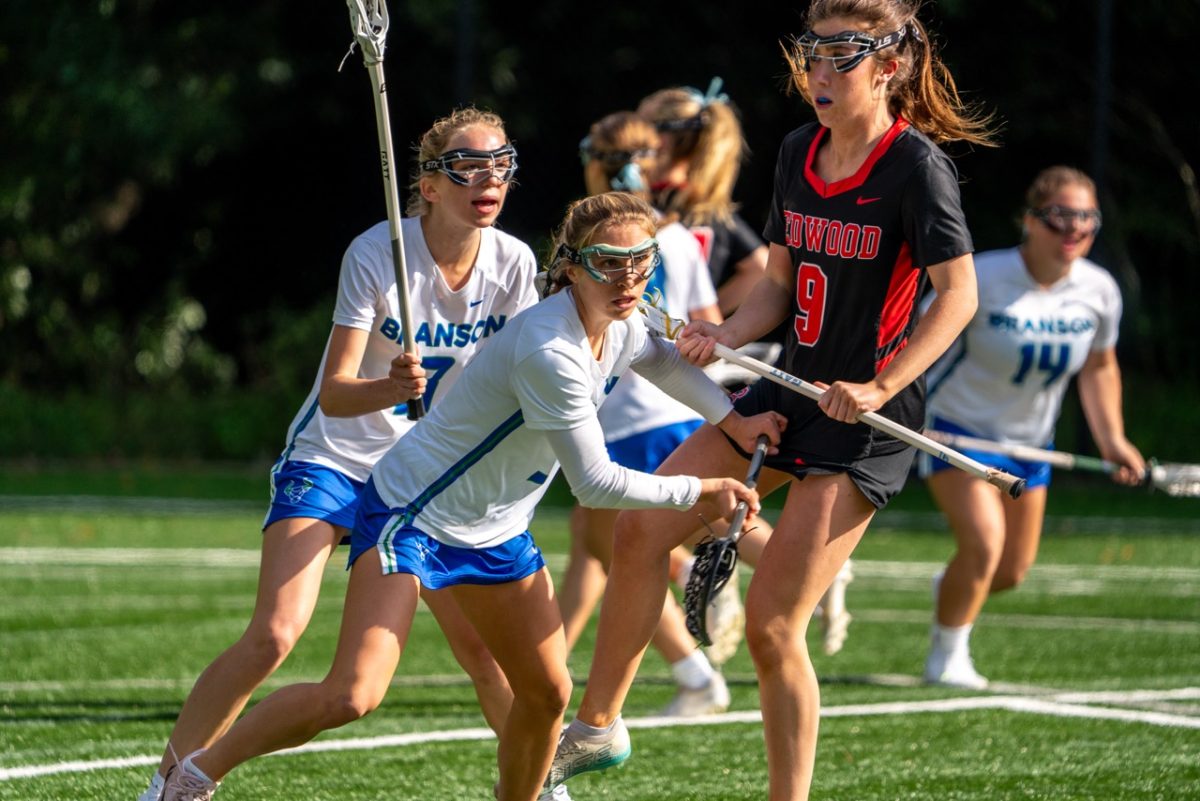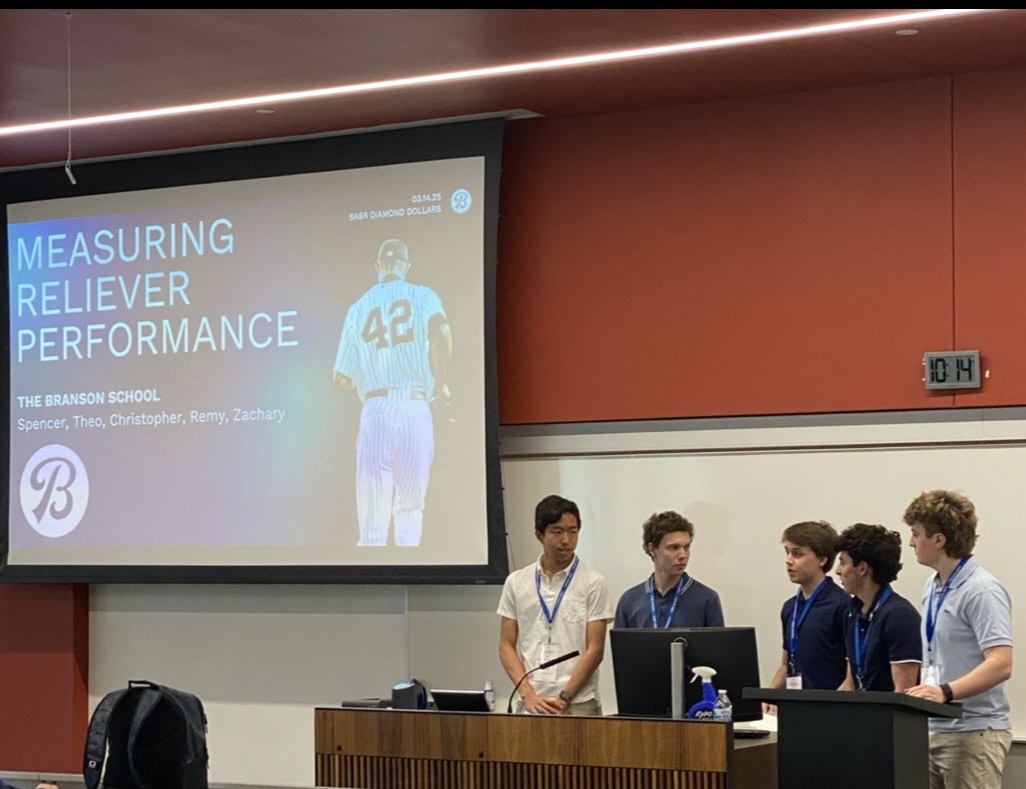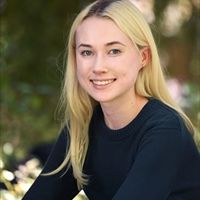Bestselling Solito author and Branson alum Javier Zamora (‘08) visited the school in celebration of Hispanic Heritage Month on Wednesday, Oct. 4 to share his remarkable experience as an El Salvadoran migrating unaccompanied to the United States.
Born in La Herradura, El Salvador, Zamora is an acclaimed author and the first Salvadoran author to make the New York Times bestseller list. He released his debut poetry collection, Unaccompanied, in 2017 and in September of last year published Solito, a bestselling memoir detailing his nine-week migration to the U.S.
“We knew we wanted to bring him to school because he graduated from Branson,” said Charlotte King-Mills, Branson’s librarian and digital literacy specialist, who co-organized the visit with Director of Alumni Relations NJ Han. “He’s got this very incredible memoir that has been getting all this acclaim, so we wanted to bring him back.”
It was also clear to King-Mills and Han that Hispanic Heritage Month would be ideal timing for his visit, and the event planning for the month took shape around it.
“We knew we also wanted to bring him for Latinx heritage month, and so once that got solidified, we brought in JuanCarlos [Arauz] and Sergio [Ovalles] and other faculty members who had additional ideas for bringing in other folks to round out the two days,” King-Mills added.
Over the first week of October, Hispanic Heritage Month, Branson celebrated with upbeat music, traditional Hispanic food, performances from the Recycled Orchestra and various workshops.
“I think that what was nice about this year was that we had a combination of things,” said King-Mills. “We had deep, intense conversations about migration, balanced out with more joyful events that celebrated a heritage.
The discussion with Zamora, moderated by Latinx Affinity leaders Kimberly De Leon ‘25 and Elisa Vigil ‘25, traversed topics of immigration, resilience, identity, mental health and belonging. Vigil said her and De Leon’s moderation “made it easier to communicate with him and the whole school.”
The presentation was followed by workshops and smaller group discussions, creating spaces for students to reflect on Zamora’s narrative.
“I think the story he has and his background is really interesting, especially the fact that he attended Branson,” said De Leon. “I think many people don’t realize that students here come from different backgrounds and aren’t born here, so it felt important for us to bring Javier Zamora.”
Organizers of the visit hoped it would resonate with students facing similar struggles and that those students could gain something from his experience.
“We came up with questions that we thought other Latinx students would want to be answered,” Vigil said. “Because there’s a lot of questions that [ask for] advice that a lot of us first generation students couldn’t get from anyone else. So coming from someone who is similar to us — it was really inspiring.”
Both Vigil and De Leon said they found his story certainly resonated with their own.
“I was also really interested in hearing his story because it deeply resonates with my family’s background,” said De Leon.
Naturally, immigration became the headlining topic of the morning. Zamora emphasized that the immigrant experience does not look the same for all.
His story also shed light on how we are often unaware of the backgrounds and experiences of others. King-Mills thought this was an important reminder.
“I thought that his story was so unique, and then again, it’s not,” she said. “I thought [his memoir] was very illuminating of all these situations that people are dealing with that we may not know about.”
This, she believes, is especially true when considering that Zamora also came to Branson.
“He was living this life and this experience, and there could be students currently living that. We don’t know,” she said.
Mental health was another topic frequented during the conversation. Zamora is a passionate advocate of the power of therapy and learning to heal from trauma and hardship.
“I think there’s something to be said about someone being brave enough to share that story, in hopes of either changing the way that we deal with systems, and inspiring people who have gone through it to know that you can continue,” said King-Mills. “And I think that his story does that very well.”
King-Mills, moreover, believes that there is value to be found in this message for the entire Branson community.
“I think every student — and faculty, too — can learn from that,” she said. “You never give up taking care of yourself, you never give up on doing the things that you need to do to make sure that you are well.”
Finding acceptance as an immigrant in a new country can be a major struggle, one exacerbated by an anti-immigrant rhetoric that endures in the United States. De Leon believes that Branson has a responsibility to foster a diverse and welcoming community where students can feel safe in their identities.
“[Zamora] spoke about how diversity is so lacking at Branson, and, for me, I feel like that means that we should do as much representation as we can, not only of the Latinx group at Branson, but also of people of color,” she said, “encouraging more leadership with creating a bigger and safer environment for people of color here.”
King-Mills, Sabrina Wilson and Parents’ Association representatives hosted a book talk on Solito for Branson parents on Oct. 12.
“It was really phenomenal,” said King-Mills.
For parents who weren’t able to read the memoir ahead of time, King-Mills provided a New York Times article written by Zamora.
“That kind of talks about his journey, and so it gives them a decent understanding of what he went through,” she said. “It still allowed for conversation where people could talk about the migrant — a migrant’s — experience, and what that means and what we can potentially do to support folks who are going through that.”
Branson’s Spanish for Native and Heritage Speakers class, taught by Sergio Ovalles, read Solito for their summer reading assignment and had conversations about it at the beginning of this school year.
“Many of [the students] actually stood up and asked him questions during the assembly,” said King-Mills.
De Leon expressed enthusiasm about the Spanish classes that Branson offers for native speakers.
“I’m really happy that there’s actually a Spanish for Native and Heritage Speakers class,” she said. “We had a good discussion about the Javier Zamora interview, and I feel like that is an essential class for Branson to have in the long-term because it allows students from native Spanish-speaking families to think more deeply about all the things that many Latinx community members have to experience, such as immigration.”
Also a leader of Latinx, De Leon shared her thoughts on the importance of the affinity on campus.
“Our leaders are really excited to be working, and we constantly share ideas, so I feel like [the affinity] has been a great way to encourage students to participate and engage in the Latinx community,” she said. “We definitely want to have more people be aware, and to spread the good energy and vibes that come with being from the Latino community.”
King-Mills emphasized the prioritization of Latinx — or any affinity’s members’ — voices in showcasing their culture, heritage and history on campus.
“I think that any kind of cultural celebration should absolutely include our student affinity groups and what their vision is for the event,” King-Mills said. “I think that the main thing is making sure that the people whose culture we’re representing have a voice, an active voice, in whatever the events are.”





